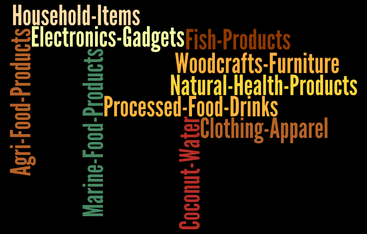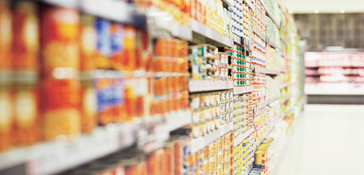 Image From: http://www.ho-chunknation.com Image From: http://www.ho-chunknation.com The questionnaires about nutrition expose the fact that there are households that shelter some malnourished individuals, despite the similarities between the structure of the house and the income level. Most causes have been credited to this occurrence, like differences in demand for time, food preferences, purchasing power, social networks, kin, and so forth. All of these aspects will impact the household as far as its capacity to get food is concerned, but they do not clarify what happens to the consumables when it gets to the house. However, the knowledge about the various ways of food distribution within the house could give answers as to who gets the most benefits, and to what degree these advantages are. Similar to the limited knowledge about the allocation of food in the house, there is also limited info on how the food campaigns could impact this. But then, food campaigns that concentrate on the residential area are created with particular objectives in mind. Being familiar with the variance in intra-household food allocation practices can provide closure to the reason for the desired result to not be achieved. Information about these intra-household food allocation processes can help in the planning and efficient implementation of future campaigns. Any person who is studying this must keep in mind that not all the food in the house that is eaten may be distributed using the same system. The staple food (in the case of the Philippines, it is rice) may be abundant, so it will be easier to dispense in any method, while other foods that are nutrient-dense should be distributed with more care. There are societies where a lopsided meat share may go to the breadwinner, while fruits or dairy items are normally fed to the children. Another normal food distribution pattern involves all the members of one household will eat a single formal meal together for one day, with cooked food distributed in a specific manner, but most of the time the people in the house eat whatever food is available.
 Image From: http://www.philippine-grocers.com Image From: http://www.philippine-grocers.com Dynamic modifications are happening in the competitive and demand structure of the vegetable industry in the Philippines, and these result in alterations to the supply distributions. It is understandable that the consumers will be very concerned about the sustainability and convenience of the production systems, their health, and traceability and food safety because of all these sudden changes. To address these issues, the conventional supply distribution is slowly being replaced by a number of alternative production systems as far as the vegetable industry is concerned. Here are some of these emerging supply chains that are being handled by a Philippine food consolidator: The Market Specialist Chain This arrangement that is being closely monitored involves the supermarket suppliers concentrating on strategies to deliver everything that their respective chain needs. The market specialist will supply a broad inventory of vegetables, including a mix of food items that are tagged and coded, packed, pre-cut or minimally processed. These individuals will place a brand on the merchandise, specifically the salads that they pack to assure the consumers that the food items that they will buy have passed quality control standards. In this kind of business partnership, the supermarkets will reap the benefits because the market specialist will deliver high quality items that they normally need at a fast rate. The Product Specialist Chain Aside from the conventional vegetable supply distribution which was the central supply source of the supermarkets, a particular chain that specializes in one product is the focus of this supply distribution. An example is the tomato, which can be planted in most areas in the country (although Baguio and Bukidnon grow a lot of tomatoes due to the colder climate in those areas). One popular Philippine food consolidator that operates in Davao, Quezon City, Cebu and Cagayan de Oro is known as the Fresh Corporation (or FreshCorp). They collect their tomatoes from farms at Bukidnon, Ilocos Norte and Cavite and distribute up to 20% of the tomato supply in Metro Manila during the months of July to December. The company takes care of their farmers while meeting the requirements of the supermarkets and their buyers.
 Image From: http://www.manilatrade.com/ Image From: http://www.manilatrade.com/ The Republic of the Philippines can be found at the west side of the Pacific Ocean, and is a Southeast Asian sovereign state. This country is susceptible to typhoons and earthquakes due to its position on the Pacific Ring of Fire, but this tropical weather has blessed the nation with diversity thanks to its varied natural resources. The people of this country know how to maximize the use of its abundant resources, and have been exporting a lot of these raw items to other countries for years, including electronics, fruits, and even manual labor. This nation is proud of these Philippine export products because of their long lasting success in the market: Electronics Intel is the main producer of the powerful Pentium and Core central processing units which serve as the brains of many computers and portable devices in the market today. Their facility in the Philippines has been in operation for more than 30 years, exporting different computer products. Another major exporter is the plant of Texas Instruments in Baguio, which has been manufacturing DSP chips for Nokia and Sony Ericsson mobile phones for over two decades now. The Toshiba brand used to make laptop computers in its office in Sta. Rosa, Laguna. In 2005, it started concentrating on the creation of computer hard disk drives. Fruits The Philippines is the global Top 2 when it comes to exporting bananas, with Japan importing a huge percentage of the product. This nation also imports pineapples and mangoes, but bananas continue to rake in most of the profit, amounting up to $250 million in revenue. Copper While the people living in this country know how to tap their natural resources, copper has an estimated $840 billion in untouched mineral deposits. This mineral is transformed into a conductor wire that is used to transfer power or sound to electronics such as earphones, power adaptors, transistors and capacitors. People One of the biggest Philippine export products is of course, the people themselves. Without their efforts, other countries will not enjoy the raw materials that they import. About 10 million Filipinos work and live in other countries to earn money for their loved ones.
 Image From: http://foundationmediasolutions.wordpress.com/ Image From: http://foundationmediasolutions.wordpress.com/ When it comes to the industry of CPG (Consumer Packaged Goods), success in this field would involve speed. This speed refers to the rate at which top businesses take advantage of current consumer trends and secure their share of the market from the competition. A good example of this that involves packaged consumer goods is the fast rate in which customer tastes can be altered. At one point, drinking coffee is considered healthy, then next time it is not, and then after a while it will be good again. Consumers prefer food items such as sweets without sugar, diet cookies, and food without saturated fat, but suddenly choose to forget their preferences and eat whatever is available. Aside from this, brands continue to fight for the greatest market share while delivering innovative products and responding to price changes or promotions from the competition. For a company to stay in operation, they have to provide excellent services or merchandise. When it comes to the field of CPG, the firm has to closely monitor their own business, the other brands and the consumers so that they can get ready for another day of work. If they properly prepare their promotional campaigns and commodities, they will retain the trust or attention of their present clients and possibly gain potential ones. “Big Data” refers to a compilation of data sets that are complicated and large, to the point that they are difficult to process through conventional data processing programs or internal database management equipment. This, together with the capacity to instantly study a lot of data is a potent weapon for assisting packaged consumer goods firms win over the consumers, earn a lot of profit, and secure retail shelf space. Data that is collected from POS (Point-Of-Sale) units and sales forecasts from retailers and distributors will help determine the next marketing strategy, pricing, distribution and the volumes of production.
|
 Image From: http://www.ho-chunknation.com
Image From: http://www.ho-chunknation.com 


 RSS Feed
RSS Feed